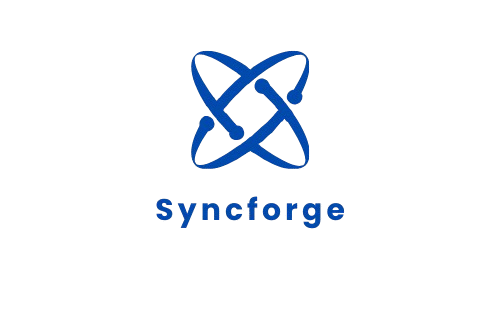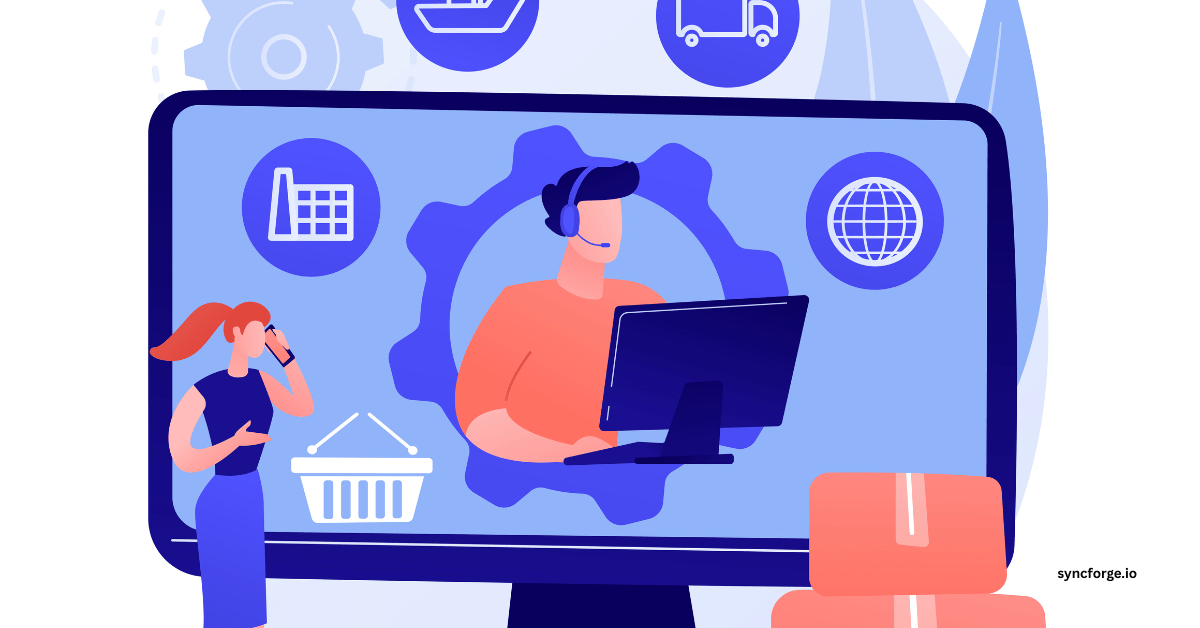The Boomerang Method Guide: Learn a Powerful SaaS Remarketing Strategy 2025

Introduction: Why SaaS Needs Smarter Remarketing:
In the realm of SaaS, winning a customer is tough and desirable, but insufficient; however, converting people who have visited your website and signed up for trials into paying loyal customers is a harder nut to crack and considered a feat. Here comes the Boomerang method, as it is known for crafting a solid remarketing strategy that reopens the closed doors and earns paying customers for your business.
The intertwines personalized workflows, email automation, behavioral targeting, and remarketing ads to bring users back repeatedly until they convert into customers.
This guide will expand your knowledge on the boomerang method, how it works, and how to deploy it better than your rivals.
What Is the Boomerang Method?
Is a SaaS remarketing strategy that employs behavior-driven workflows and multi-channel retargeting to recapture potential customers who drift away after exploring your features and pricing page.
Rather than blasting general ads, it employs advanced remarketing techniques to regain customers for SaaS companies that slipped through their fingers. This method not only convinces your users to make a single purchase, in fact it also builds a conversion funnel loop to foster customer satisfaction and loyalty.
This is not a shot in the dark. DemandSage reported that users who click retargeting ads are 70% more likely to buy your services than those who don’t. The method pulls them back over time by triggering automated emails and push notifications.
Why the Boomerang Method Works for SaaS:
SaaS product buyers are vigilant; they rarely convert on the first visit. Instead of taking instant decisions, they compare and test your product among others. Studies suggest that:
- Generally, users are stuck, and almost 98% of website visitors leave without taking action.
- The average value of SaaS free trial conversion is only 25-30% which is less than satisfactory.
- Remarketing strategies, especially retargeting ads, can boost conversions by 150% or more
- Almost 77% of marketers are employing retargeting on Facebook and Instagram to convert their users into purchasers.
In contrast to the traditional method, the method sets up a full funnel and multi-channel engagement. It is not a theory; it works.
Core Elements of the Boomerang Method:
There are six pillars of this remarketing strategy, which are known as its building blocks:
- Behaviour-based Segmentation: This strategy highlights that all non-converters cannot be treated the same. It contrasts with one-size-fits-all strategies because different customers have different reasons to go away, and one similar approach cannot attract all of them. The remarketing strategy has to start exactly from where the user left off.
Retargeting would fail to hit its mark until you have carefully categorized the users into specific groups on the basis of their on-site actions. For example:
The pages visited by the users disclose their interest, and the session duration indicates the depth of their interest. Their interactions on your site highlight key concerns, and the exit point reveals hindrances that pause them from converting.
The Boomerang method precisely tailors your remarketing strategy, taking into account all the above signals.
- SaaS Remarketing Strategies: After categorizing your users into segments, clearly define remarketing strategies and address a specific segment with the
most suitable approach. For instance:
- Take the services of Google display ads to retarget trial users who have dropped onboarding
- B2B company can lift their conversions by running LinkedIn retargeting using testimonials for specific and relevant users.
- Facebook retargeting ads accompanied by case studies can also provide solution for your pain point.
- Retargeting Ads for SaaS: The utilizes ad sequences that meet the point where the users are in their journey:
- It uses dynamic remarketing ads to demonstrate exactly what the user saw on-site, e.g., pricing, plan, or features, etc.
- It utilizes video remarketing ads or demo walkthroughs explaining SaaS features to persuade users who are in the consideration stage.
- It sequences cross-platform ads (Facebook, Instagram, Google, etc), following testimonials and case studies, and accelerates urgency by mentioning offers and deadlines.
- In a campaign with AdRoll, Yatango retargeted its audience based on their on-site activity by personalized messages with dynamic creatives and witnessed a 200% spike in conversions.
- Multi-Channel Remarketing: A single channel cannot do the needful because every mind cannot be captured by using one channel. The chances of reconnecting increase on multiple channels. It integrates:
- Email automation benefits your solution and delivers depth by sending follow-up emails after trials.
- In-app messages help in convincing users who have already installed your application but have not converted yet. It guides them to activation and reduces trial set down.
- Users are encouraged to explore unused features through push notifications.
- Social media remarketing is utilized to win users’ trust through testimonials, stats, and video remarketing is used to demonstrate your product’s vision visually. It benefits you more than static content.
- App user Acquisition & Retention: Just winning new users is not the finish point, but keeping them is the real triumph. You must always keep a close eye on indicators that predict someone’s higher probability to convert or churn by monitoring their usage and lack of login.
- After monitoring their usage trends, trigger win-back campaigns for users who are at risk and are about to leave, and encourage free trial users to upgrade to premium by giving limited offers.
- Act before drop off because acquisitions are costly, whereas retention adds high value to your company at less cost.
- The SaaS Marketing Funnel Integration: Instead of rushing into discounts, the method provides a step-by-step progressive incentive ladder for your product through the following:
- Awareness: This is the first stage of the funnel. Users are not very familiar with your brand, and you are retargeting them by introducing yourself through educational content like blogs, guides, and webinars, etc. You give them value before an offer
- Consideration: After users have started free trials of your product, appreciate them with incentives like an extended free trial period.
- Decision: Now that the user has started relying on your product, you can offer time-sensitive discounts to hesitant buyers and turn them into conversions.
- Retention: It can add lifetime value to your product by triggering win-back campaigns at the right time for churned users (who are about to unsubscribe or stop purchasing further)
Tools to Implement the Boomerang Method:
The effectiveness of depends heavily on the tool that is powering it. SaaS companies require a blend of ad platforms, automation systems, and many other tools to craft a timely, relevant, and quantifiable remarketing strategy. Following is the list of SaaS friendly platforms:
- Google Ads & Meta Ads are the core engines for paid retargeting campaigns
- LinkedIn Ads are ideal for B2B SaaS remarketing to target the decision makers.
- HubSpot, ActiveCampaign, or Customer.io are designed to drive email or behavioral automation.
- Mixpanel or Amplitude are User analytics tools for following user trends across your website.
- Clearbit & Segment are for data enrichment and customer segmentation to identify signals.
- AdRoll & Crite are specially designed for Multi-channel remarketing management. They show how a strategy has uplifted or lowered your conversions.
Benefits of the Boomerang Method vs Traditional Remarketing:
Traditional marketing follows you everywhere on the internet. It relies on a bombardment of generic ads, whereas the structured, personalized, and relevant approach to transform your users into purchasers. Below is the clear difference:
| Traditional Remarketing | Boomerang Method |
| It is One-dimensional (ads only) | It is multi-channel (ads, email, in-app, push). Use different platforms or their blend. |
| It is for everyone. Generic messaging | It has behavior-driven personalization and is only for specific users, for example: Showing case studies to trial users only instead of the same ad to everyone. |
| Focuses only on acquisition means, only attracting users | It takes care of both acquisition and retention. It not only earns new users, but it also aims to convert those users. |
| It is reactive; it responds only after a user takes action, instead of guiding their behaviour. | It is Proactive and predictive. It does the needful before the drop off or increase in churn rates. |
Step-by-Step Guide to Executing the Boomerang Method:

Every section of the SaaS remarketing strategy needs to be structured and carefully outlined to optimize the effectiveness. To execute an effective strategy, the following steps are to be followed carefully:
- Step 1: Design your audience segments: Each person is a different key on a piano; a single strategy cannot convince all the users. You have to break down your audience into clear segments based on their on-site interaction and then retarget them. For instance, if someone were a trial user, they may need an onboarding guide, but a churned user would be persuaded differently. You may offer incentives with win-back campaigns to regain them.
- Step 2: Install tracking pixels: Tools like Google Ads Pixel and LinkedIn Insight Tag gather user activity data to assist you in launching informed remarketing campaigns rather than depending on guesswork.
- Step 3: Set up automated workflows: Automation has made human life easier. It makes sure that your remarketing strategy remains timely and consistent, leaving no room for ambiguity. It is responsible for triggering emails, push notifications, and retargeting ads. If someone has not logged in for a week, it could remind them by about unused features or alert them to missing a good offer.
- Step 4: Personalized messaging: Personalized communication based on segment requirements has done the job well in the SaaS market. Delivering what they need to hear or see is the key.
- Step 5: Run A/B tests: A/B testing or splitting method discloses which method would perform better against a specific goal. You have to constantly optimize your remarketing strategy.
- Step 6:Measure KPIs: To evaluate the effectiveness you have to track indicators. Such as click-through rates (CTR), customer acquisition cost (CAC), and Lifetime value (LTV) to redefine your strategy and keep your users engaged.
Key Metrics to Track
Metrics allow you to track the right numbers to make sure that your remarketing strategy efforts are paying back, or just wasting your money or energy. You can check the profitability of your strategy by tracking the following metrics:
- Click-through rate (CTR) tells you how many clicks your ad attracted and how many people have interacted with your ad after seeing it. Low CTR highlights a weak strategy, leaving room for improvement.
- Trial-to-paid conversion rate evaluates how efficiently you are boosting your conversions and making free trial users your paid customers. A high rate means you are doing it right.
- Customer acquisition cost (CAC) is the cost you spend to win each new customer. The reduces CAC because it targets specific segments that have already shown interest, instead of wasting money on the generic population.
- Churn rate reduction signals the growth of your product and the success of your remarketing strategy. It is the rate at which people are pausing to buy new subscriptions or cancelling their previous subscription, so a low churn rate is a win.
- Customer lifetime value (CLTV) is the estimation of the total profit a single customer can give to your product during their lifetime relationship with your product. If CLTV is higher than CAC, it indicates sustainable growth.
- Return on ad spend (ROAS): It shows whether your campaigns are cost-effective and scalable. It is the revenue earned for every dollar spent on remarketing ads. If you have spent $1000 and generated $2000, then your ROAS is 2:1.
Common Challenges & Solutions
Obstacles are everywhere. Perfection is not possible. The boomerang method works effectively when you identify the underlying issues and apply practical fixes. It keeps your campaign compliant and effective. The most common challenges are given below:
- Challenge: High remarketing costs
Solution: Instead of spending on a wide and generic audience, you must use predictive analytics to solely target high-intent users, such as pricing page visitors, feature explorers, and narrowing your audience will reduce the expenses as well - Challenge: Privacy regulations (GDPR, CCPA)
Solution: Rely on first-party data such as email signups, etc, to avoid any legal problem and always take consent from the user to stay compliant.
FAQs:
Is the boomerang method only SaaS oriented?
It is specially built for SaaS, but can also be employed by any subscription-based company.
What is the boomerang method in SaaS marketing ?
A structured, advanced remarketing technique to retarget users who did not convert by focusing on behavior-based targeting.
What is the main difference between SaaS marketing ads and traditional marketing ads?
Traditional marketing ads are generic and for all, whereas SaaS marketing ads are personalized based on user behavior and target a specific segment.
Which tools are suitable to implement the boomerang method?
HubSpot, AdRoll, and Google Ads are among the few options.
Does the boomerang method function better with B2B SaaS or B2C SaaS?
It suits more to B2B SaaS, because B2C SaaS has slightly different requirements and dynamics.
Conclusion: Why SaaS Companies Should Adopt the Boomerang Method
SaaS markets are well informed that, in this era, acquiring traffic is not enough. The biggest milestone is how effectively a company brings back its users and converts them into loyal customers. The has no comparison because it is multichannel, proactive, lifecycle-focused, and much more.
It lowers churn rates by giving multiple chances to potential buyers to return and boost conversions.
If you are running a SaaS business and have not adopted the till now, you are missing out on massive users who can add value to your business. Grab it now!
CTA:
Build your SaaS journey with us! Explore more about SaaS on our website Syncforge.




